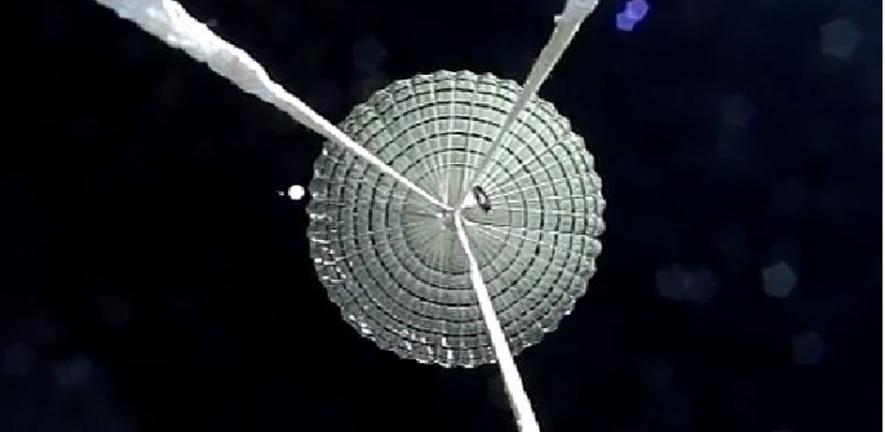
Cambridge students have tested a parachute capable of safely landing a probe on Mars.
Cambridge students have tested a parachute capable of safely landing a probe on Mars.
Mars has an atmosphere more than one hundred times thinner than Earth's, and re-creating these high velocity, low density flows in a wind tunnel is a hugely expensive, if not impossible, task”
Iain Waugh
Students from the Cambridge University Spaceflight team (CUSF) have successfully tested model parachutes for the ExoMars lander. The ExoMars lander project is a European-led robotic mission to Mars. Working in conjunction with the European Space Agency, the student team tested a model of a parachute capable of landing on Mars, by re-entering the Earth’s atmosphere at 450mph.
Entry, Descent, and Landing (EDL) is perhaps the most challenging part of any Mars lander mission. The process requires a complex system of heat shields, parachutes, retro-rockets and airbags, all having to assemble themselves mid-air.
"Six Minutes of Terror" is how engineers describe the process of EDL as a failure in any one part would lead to almost certain mission failure.
“The Spaceflight team's testing method has not only been successful but is an extremely cost effective way to test parachutes in a Mars-like environment,” said Iain Waugh, second year PhD student at the University of Cambridge.
The testing method developed by the CUSF team costs only £1000 per launch to test one of the 1/10th scale parachutes. Previously, only full scale parachutes had been tested in this way, with costs of over a quarter of a million dollars per test. For a new planetary lander project, the CUSF method will allow lots of initial parachute design to be tested cheaply, before choosing the best designs to go forward to the more expensive full scale tests.
Iain Waugh added: “Mars has an atmosphere more than one hundred times thinner than Earth's, and re-creating these high velocity, low density flows in a wind tunnel is a hugely expensive, if not impossible, task”.
Using their experience with high altitude scientific balloons and instrumentation, the Spaceflight team built a balloon-lofted vehicle packed with a test parachute. This was taken to the top of the atmosphere, where the air is a similar density to the surface of Mars.
The vehicle was then instructed by remote control to free-fall for an amount of time calculated to let it accelerate to Mach 0.8 (Mach 0.8 means 80% of the speed of sound), the parachute was then deployed.
The team monitored its inflation using a suite of instrumentation including accelerometers, gyroscopes and a high speed camera.
Slow motion video footage shows the parachutes flight during one of the low-speed system development tests. At 24km, the vehicle cuts away from the balloon, and a rope from the balloon immediately pulls the parachute out of the deployment bag. Because the vehicle is going so slowly, and the air is so thin, the parachute takes a few seconds to inflate (the video is 10x slower than real-life) and the vehicle tumbles. In the high-speed parachute test, the parachute was deployed at Mach 0.8 (an airspeed of 250m/s) and was fully inflated in 1/20th of a second.
The team recently presented their work at the 21st AIAA Aerodynamic Decelerator Systems Conference in Dublin, where it took first place in the Best Student Paper competition.
Cambridge University Spaceflight is a student-run society formed in 2006 to experiment with low-cost spaceflight.
This work is licensed under a Creative Commons Licence. If you use this content on your site please link back to this page.





